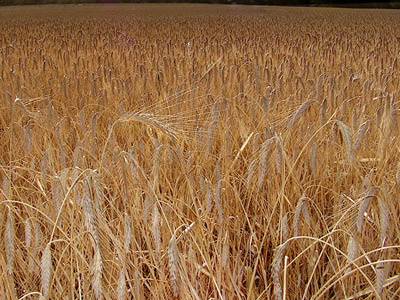Research Brief
Climate change effects on irrigation demand and crop yields in South Africa
The demand for irrigation is likely to increase in South Africa as a result of increased temperatures and evaporation rates.
Rain-fed agricultural crops are likely to experience a decline in average annual yields. This is particularly the case for maize and wheat, which are staple foods.
Soybean and sugarcane are likely to experience no change or an increase in average annual crop yields as precipitation increases offset higher evaporation rates in regions where these crops are grown.
Agriculture is critical to South Africa’s future economic growth, job creation, and national food security. However, the sector is directly affected by precipitation, temperature, and evaporation, and is thus particularly vulnerable to climate change. Climate change impacts will vary across space (for example, some regions may become dryer while others receive more rainfall) and across crops due to differences in the way crops respond to climatic conditions. With agriculture consuming 60 per cent of available water resources in South Africa, climate-induced changes to water demand along with changes in different crop yields must be assessed to enable future planning.
The potential impacts of climate change on irrigation demand and rain-fed agriculture yields by 2050 can be predicted through an integrated assessment model framework. Two global climate scenarios are incorporated into nine crop models for South Africa: unconstrained global emissions and a global mitigation scenario where the global temperature rise is limited to two degrees Celsius (see Webster and colleagues 2011), which we call level one stabilization.
Unconstrained global emissions will impact South Africa’s irrigation demand and crop yields

Due to the relatively uniform increase in temperature across the country, there is little change in the median impact on irrigation demand in different regions. The eastern part of the country, however, does experience a wider range of possible impacts due to the wider range of potential precipitation impacts in this area. Overall, under an unconstrained global emissions path, irrigation demand will see a median, or midpoint, increase of 6.4 per cent by 2050, with increases of more than 12 per cent possible.
Crops will also be affected by changing conditions. Modelling shows a very wide range of possible impacts on the average annual yield of dry-land crops, although for most crops a decline is likely. There are, however, two exceptions: soybean is likely to experience relatively no change while sunflower in most estimates will see an increase in yields.
Of significant note is the large potential decline in two staple food crops in South Africa, maize and wheat, as a result of drier conditions. The potential impact on maize yields ranges from a national reduction of 25 per cent to an increase of 10 per cent. The median change is -3.5 per cent, with a higher probability of a decrease in yields. The predicted impacts on wheat are similar, with a median average annual yield decline of 4.3 per cent.
Less severe effects with global emission limits

A stringent global mitigation scenario, produces less severe effects on irrigation demand and crop yields in South Africa. With emission limits in place, the median increase in total annual average irrigation demand in the country is 3.6 per cent. Extreme increases in demand are also moderated, with the maximum surge being 8.6 per cent, and some models even showing the possibility of a slight reduction due to increased precipitation.
Mitigation would not prevent all declines in maize and wheat yields, but there is a tighter range of possible outcomes. The median decrease is reduced to 3.0 and 1.8 per cent respectively by 2050. For the other seven crops considered, smaller impacts on yields with a generally tighter range of possible outcomes are also observed under the mitigation scenario.
Mitigation and improved agricultural practices can help reduce negative impacts
Irrigation demand in South Africa is highly likely to increase in the future due to increases in temperature and evaporation, according to both an unconstrained global emissions and a global mitigation scenarios. Given that agriculture already accounts for more than 60 per cent of water use in South Africa, this increase is likely to result in added pressure on existing water resources, which may in turn lead to less certain supply and yields from irrigated agriculture.
Mitigation should be pursued in order to offset some of the negative impacts of climate change on irrigation demand and crop yields.
Current agricultural practices should be improved to promote further resilience to climate change effects.
Although a wide range of potential impacts on average annual crop yields were found, the likely impact for most crops is a reduction in yields by 2050. The impacts on maize and wheat are of particular importance given their staple food crop status. The potential impacts are, however, less severe if robust policies are in place to limit the global temperature increase. Improved agricultural practices — including improved tillage and irrigation efficiency, and the development of more resistant and high yielding crop varieties — could also help offset small declines in crops yields due to climate change.
 Join the network
Join the network